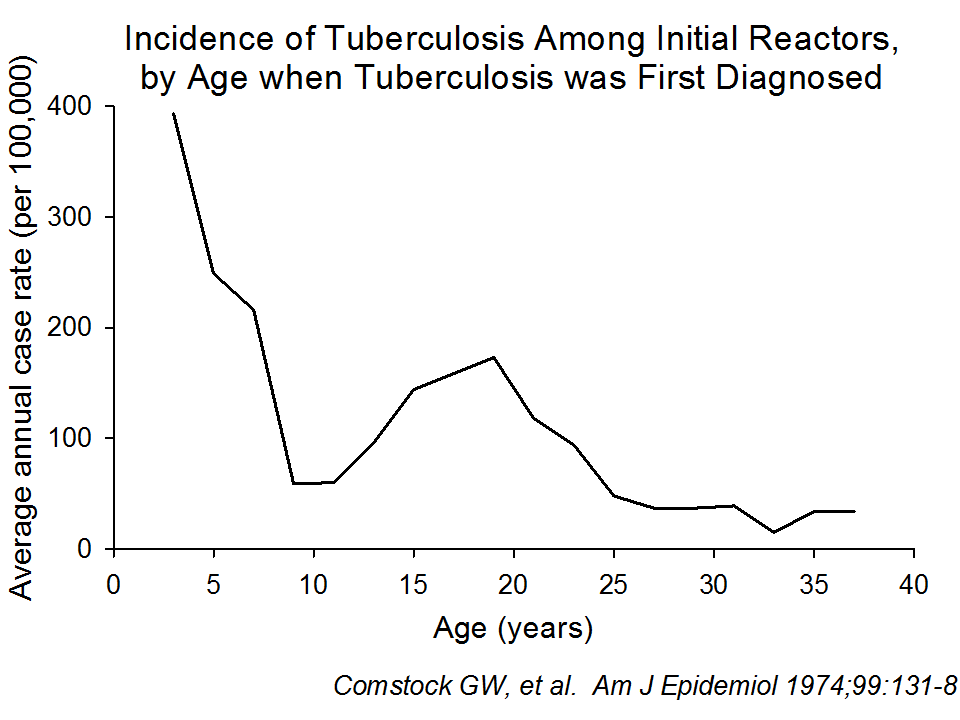 |
|
| |
|
|
| Slide |
068 |
Epidemiologic Basis of Tuberculosis Control |
 |
Next |
 |
 |
Previous |
 |
First |
 |
Last |
Evaluating differences in the risk of progression from tuberculous infection to tuberculosis by age is not that easy because of the confounding effect of time since infection was acquired (recent infection as a risk factor - see later).
The observation made here indicates that risk is highest below the age of 5 years, reaches a nadir around age 10 years, increases in adolescence and peaks shortly before age 20 years and then declines to the lowest levels after 30 years of age.
The reasons for these differences are not known, but it is suggestive to assume that immature cellular immunity is responsible for the very high risk in children under the age of 5 years. It is also tempting to speculate that hormonal changes in adolescence are responsible for the increased risk in this period of life.
Little is known about the risk of progression to tuberculosis in age groups older than those shown here, but there are indications that at very old age the risk may increase again. |
| |
|
Go to top
Last update:
September 10, 2010